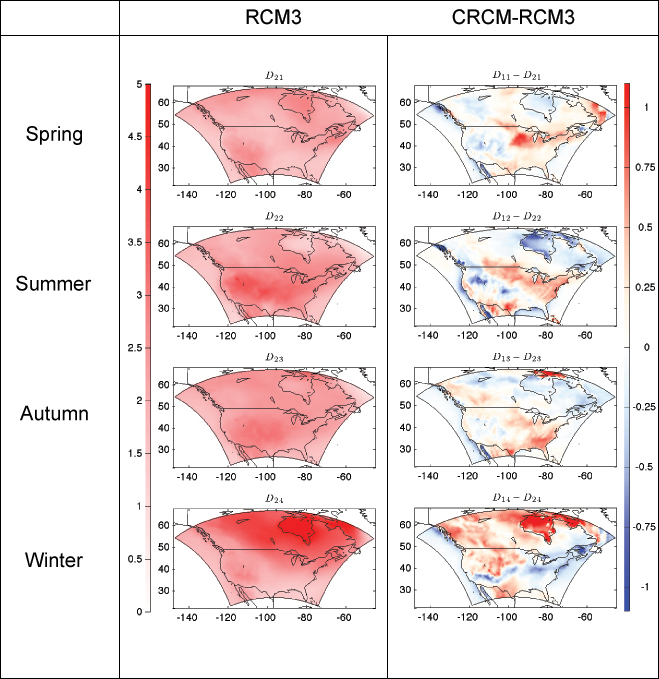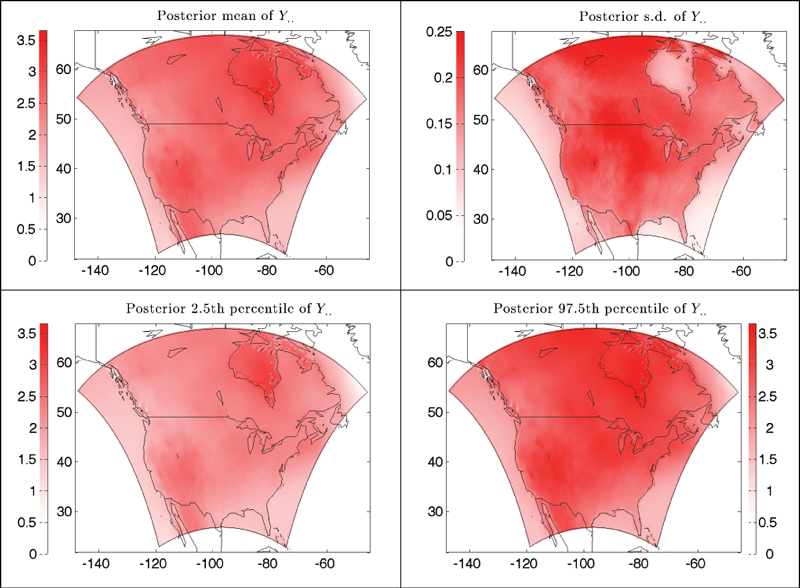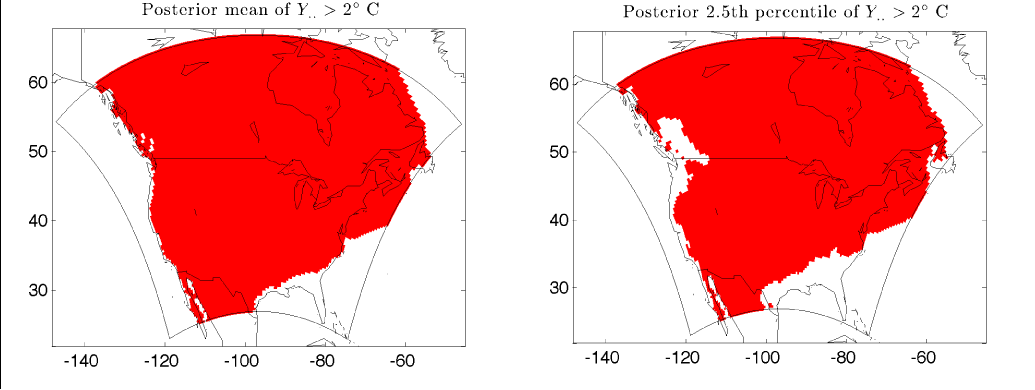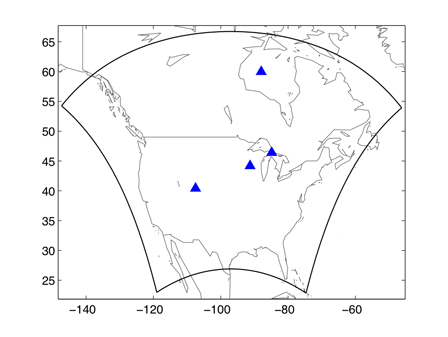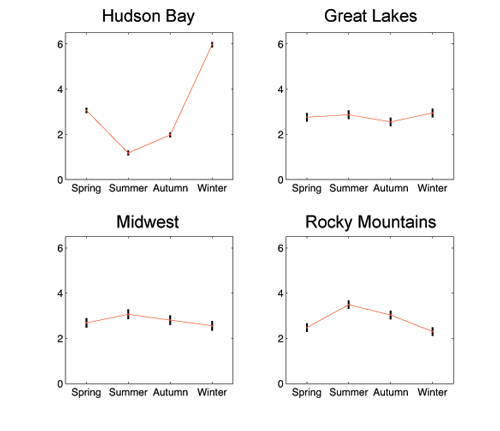Berliner, L.M., 1996. Hierarchical Bayesian time series models, in Maximum Entropy and Bayesian Methods, K. M. Hanson and R. N. Silver (eds.). Kluwer Academic Publishers, Dordrecht, NL, 15-22.
Cressie, N., Johannesson, G., 2008. Fixed rank kriging for very large datasets. Journal of the Royal Statistical Society, Series B 70, 209-226.
Cressie, N., Wikle, C.K., 2011. Statistics for Spatio-Temporal Data. Wiley, Hoboken, NJ.
Fennessy, M.J., Shukla, J., 2000. Seasonal prediction over North America with a regional model nested in a global model. Journal of Climate 13, 2605-2627.
Kanamitsu, M., Ebisuzaki, W., Woollen, J., Yang, S.K., Hnilo, J.J., Fiorino, M., Potter, G.L., 2002. NCEP-DOE AMIP-II Reanalysis (R-2). Bulletin of the American Meteorological Society 83, 1631-1644.
Kang, E.L., Cressie, N., 2011. Bayesian inference for the Spatial Random Effects model. Journal of the American Statistical Association 106, 972-983.
Kang, E.L., Cressie, N., 2012. Bayesian hierarchical ANOVA of regional climate-change projections from NARCCAP Phase II. International Journal of Applied Earth Observation and Geoinformation, in press. doi:10.1016/j.jag.2011.12.007
Mearns, L.O., Gutowski, W.J., Jones, R., Leung, L.Y., McGinnis, S., Nunes, A.M.B., Qian, Y., 2009. A regional climate change assessment program for North America. Eos, Transactions, American Geophysical Union 90, 311-312.
Nakicenovic, N., Alcamo, J., Davis, G., de Vries, B., Fenhann, J., Gaffin, S., Gregory, K., Grubler, A., Jung, T.Y., Kram, T., et al., 2000. Special report on emissions scenarios: A special report of Working Group III of the Intergovernmental Panel on Climate Change. Technical Report. Environmental Molecular Sciences Laboratory, Pacific Northwest National Laboratory, Richland, WA, USA.
Sain, S.R., Furrer, R., Cressie, N., 2011. A spatial analysis of multivariate output from regional climate models. Annals of Applied Statistics 5, 150-175.
Xue, Y., Vasic, R., Janjic, Z., Mesinger, F., Mitchell, K.E., 2007. Assessment of dynamic downscaling of the continental US regional climate using the Eta/SSiB Regional Climate Model. Journal of Climate 20, 4172-4193.
